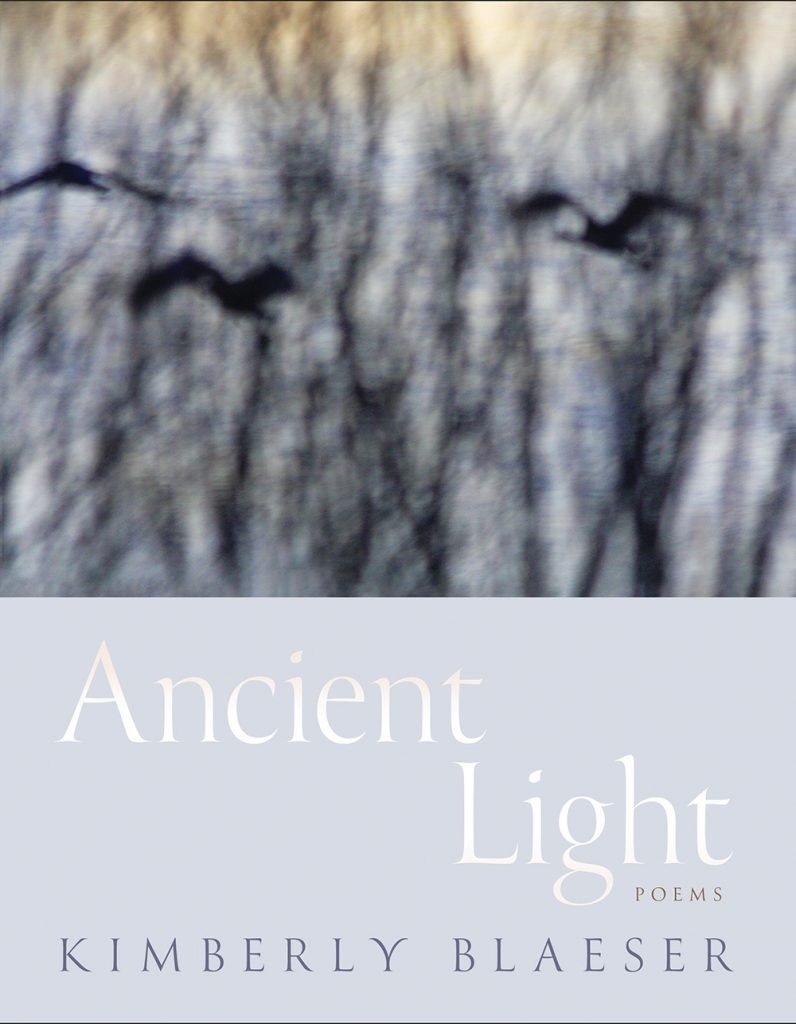Book Review of “Ancient Light” written by Kimberly Blaeser By Tanya Tyler
Book Review of “Ancient Light” written by Kimberly Blaeser
By Tanya Tyler
“Let the Light Influence You”
“Ancient Light” is the newest collection of poetry by Kimberly Blaeser touching on different topics such as the uncertainty of the pandemic, missing and murdered Indigenous Relatives (MMIR), and environmental sustainability concerns. The idea presented by Kimberly Blaeser is how do we examine the world from an Indigenous perspective. Important elements that appear repeatedly include water, community, and family. Blaeser’s words are fluid, they move with the reader, pouring into us: we take in the feelings, knowledge, and we, in turn, pour our knowledge into others. How much water (knowledge) should we retain? Would we have enough to sustain ourselves, or continue to give to others? This knowledge is infinite but as with our resources, our time here is limited.
Imagery is one of the outstanding elements of this poetry collection. It intensifies the storytelling with its use of water, animals, shadows, and nature. If you enjoy falling deeply into poetics, this is the book for you. It is hypnotic and addicting to read aloud and escape into this watery world. Each word has been carefully selected and crafted for countenance. One example of these beautifully woven images is located “Taxonomy”:
“The ancestors live in boxes now. I live squared— /only head. The world is blue screen, is scream. / Name something intact—without acronyms. / Morning cormorant a silhouette – elongated / in familiar, a routine of hunger then bulk. / We swallow whole the impossible. No one / feeds prettily. Avert your eyes, survive.” (11).
The amount of sculpting Blaeser did to compose her book is present in each expression, every syllable, and punctuation. Her work is exceptional in invoking different emotions from the reader.
The cover art includes a striking image of birds flying. The camera appears to be peering through the reeds with a blue background, and the birds are not quite clear, but it is up to the reader to decipher it. Is it the sky behind the flying birds? Or is it rippling water when the book is slanted back and forth? As a reader, I come from the Southwest where water is scarce, and where our most prominent birds are crows and roadrunners. These poems are an oasis, a watery landscape to see, hear, and feel during the dry heat of summer including vivid depictions of the Minnesota winters.
Further images include are photos taken by the author or a historical photo. One such antique photo is of an Indigenous child sitting in a box in front of an “Indian Bldg.” somewhere in Albuquerque, New Mexico. In the undated black and white photo, the innocent child is alert and sitting alongside its mother. The mother appears to be working hard to survive and is momentarily distracted from the child. The photographer was able to capture this moment eternally, but Blaeser praises this sweet child with her tender use of words celebrating the baby’s Indigenous existence in the world with: “Hello melon plump arms. / Aaniin little gourd wrists. / Just there, Buddha child / circle of woven bracelet / indent the putty of your flesh” (62). Although the photograph depicts a challenging time, the author’s words instead uplift our spirits observing the resiliency and fortitude that we are still here. In the book, there are poems included that intertwine childhood memories with the narrator’s grandmother while making a traditional turtle soup or receiving an unforgettable gift from her father that “…whispered to me the things he left unsaid” (60). The author’s perspective of Indigeneity comes through as well with the ties to the language and community. Many of Blaeser’s words are written in her Anishinaabe language.
Loss is also a theme that many poems are steeped in. The longing is palpable with each word referencing vanished relatives. These culminate with one of the most intriguing poems, “see us sacred = Xtracted” that illuminates the epidemic of Missing and Murdered Indigenous Relatives. This is one of the most poignant poems I have seen regarding this tragic topic. Unfortunately, this subject impacts many Indigenous people, many of whom have lost family members, that some lines sting with heartache such as: “Bled or buried. We / remain remains. / Invisible as stench—/ This skirt edge of haunting / scarlets a long outwaiting” (13). The lines in this piece are remarkably commanding in that they do not attempt to withhold how Indigenous women are described to the non-Indigenous population.
There is a provoking image that accompanies the poem. It is an interpretation of a hangman game. The woman and gallows are “drawn” with words that labels an Indigenous woman in black and red ink such as “each gone ikwewag / Bled or Buried. We remain / mortgaged morality of America” (12) which are used to draw her skirt and hair. The reader must rotate the book to figure out every single word about this woman. The minute details allow the vehemence to smolder for the reader while realizing there is a brief moment of powerlessness. The reader understands the grief and frustration from the family members and their community experiencing this anguish. The poem emphasizes what is transpiring with media attention to these cases: she remains nameless, assumed to be a negative stereotype, and are soon forgotten.
There are two uses of the term “Ancient Light,” one comes from the poem “Indian Baby in Front of an Indian Bldg., Albuquerque, N.M.” used to embody the will to survive possessed by many Indigenous people. The other use of Ancient Light comes from the poem “Crane curves of this woodland sky—” which places the reader in the poem by the author calling out the reader as
“you” and “your.” The ancient light is what the reader wants it to be, whether that is water, a source of knowledge, or the hope that we project onto others.
This book will be a fantastic read for poetry lovers and others who are willing to open themselves up to what art should be. An escape from the harshness of every day while letting the waves overcome you and allowing the experience to seep in.
WORKS CITED
Blaeser, Kimberly M. Ancient Light: Poems. University of Arizona Press, 2024.
Tanya Tyler (she/her) is Diné from Tséʼałnáoztʼiʼí, New Mexico on the Navajo Nation. She graduated with honors from the University of New Mexico with a Bachelor of Arts and double majored in English and Women, Gender, and Sexuality Studies. Her work has been published in Conceptions Southwest and Yellow Medicine Review. She is a first-year student in the MFA program in Creative Nonfiction at the Institute of American Indian Arts. She currently lives in Albuquerque, New Mexico.

